What is the history of marble run? A Look at Its Evolution
What is the history of marble run? These tracks have fascinated people for generations, blending fun, creativity, and engineering into a timeless activity. What began as simple games with rolling spheres has transformed into intricate designs and competitive setups that inspire builders of all ages. Exploring their history reveals how they have evolved into tools for learning, entertainment, and artistic expression.
Ancient origins of marble games
The roots of marble games stretch back thousands of years, making them one of the oldest forms of entertainment in human history. Archaeological discoveries suggest that early versions were played as far back as ancient Egypt, Greece, and Rome. These early games laid the groundwork for the marble runs we know today.
Early evidence and materials
Artifacts resembling marble have been found in Egyptian tombs, dating back to around 3000 BCE. Early versions were crafted from stone, clay, and sometimes glass, showcasing the resourcefulness of ancient civilizations in creating tools for play.
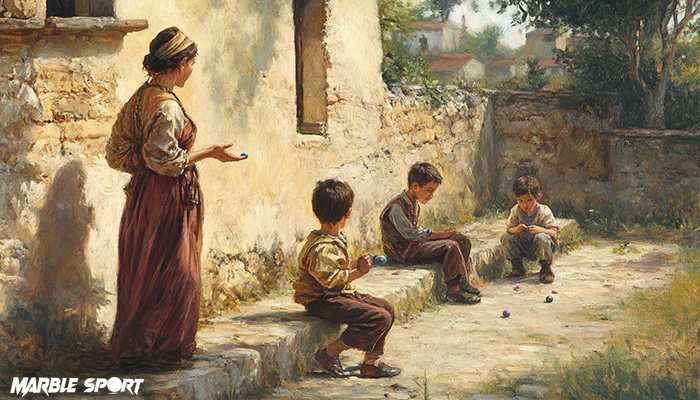
In Greece and Rome, children and adults alike used marbles in games that involved rolling, shooting, and targeting, often as a test of skill and precision. These activities reflected both recreation and cultural traditions, making them more than just toys, they were social and competitive tools.
Cultural significance
Marble-like games weren’t just for fun, they often held symbolic meaning. In some cultures, they were used in ceremonies or as training tools to improve focus and coordination. The smooth designs and durable materials made them treasured items that could be passed down through generations.
Foundations for modern marble runs
Although ancient versions didn’t include tracks or obstacles, the concept of rolling objects through challenges set the stage for later developments. Over time, these early designs evolved into most structured systems, eventually inspiring the marble runs that are recognized today.

The history of marble games reminds us that play has always been an important part of human culture. It’s fascinating to see how something as simple as a rolling ball has transformed into the creative and educational marble runs we enjoy today.
Early development of marble runs
What is the history of marble run? It began with simple, handmade tracks and gradually evolved into structured designs that encouraged creativity, problem-solving, and entertainment. What started as basic play with rolling spheres along grooves in the ground or carved wood eventually transformed into more elaborate designs during the 19th and 20th centuries.
From handmade tracks to structured designs
Early versions of marble runs were often improvised using wooden planks, ramps, or trenches carved into dirt. Children created tracks to guide rolling objects along slopes, experimenting with angles and curves. This simple setup introduced the idea of constructing pathways for marbles, a concept that later inspired more engineered designs.
By the 19th century, wooden toys gained popularity, leading to the first commercially made marble tracks. These sets feature grooves, slides, and ramps offering a more organized and interactive experience while still allowing flexibility for customization.
Influence of wooden toys and mechanical designs
In the late 19th and 20th centuries, wooden marble towers and mechanical contraptions started appearing as educational toys. These designs featured levers, pulleys, and spinning parts, transforming marble play into a mix of physical and mechanics.
Toy makers saw the potential to blend learning with play, creating sets that introduced children to motion, gravity, and momentum. These early designs laid the foundation for the modular marble runs we see today.
Early educational uses
Marble runs quickly became popular in schools and homes as teaching tools. They helped children develop problem-solving skills, hand-eye coordination, and logical thinking while encouraging experimentation.
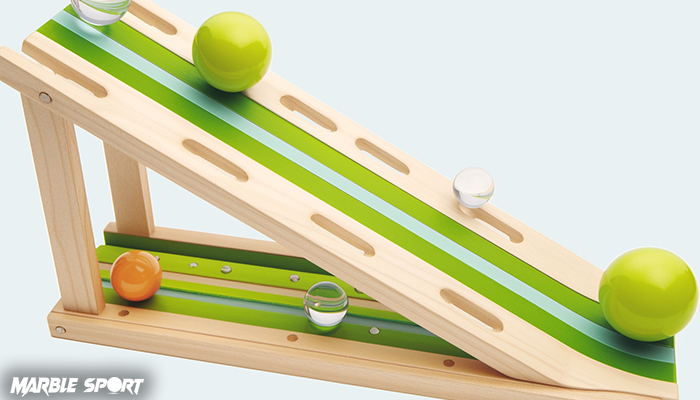
Teachers and parents used these toys to demonstrate basic engineering principles, making learning more hands-on and engaging. Even today, many modern marble runs are designed with STEM learning in mind, continuing the tradition of combining education and play.
The early development of marble runs highlights their timeless appeal. From handmade grooves to structured wooden designs, marble runs have always encouraged creativity, learning, and fun, a legacy that continues to inspire builders today.
Modern marble runs and innovation
The mid-20th century marked a turning point for these runs, transforming them from simple wooden tracks into mass-produced sets designed for creativity and learning. With advancements in materials and engineering, marble runs evolved into modular systems that offer endless possibilities for customization and play.
In recent years, DIY marble runs have surged in popularity, enabling enthusiasts to construct custom tracks using everyday materials like cardboard, foam, and wood. These creative projects provide an exciting way to explore engineering and physics while making marble racing more engaging.
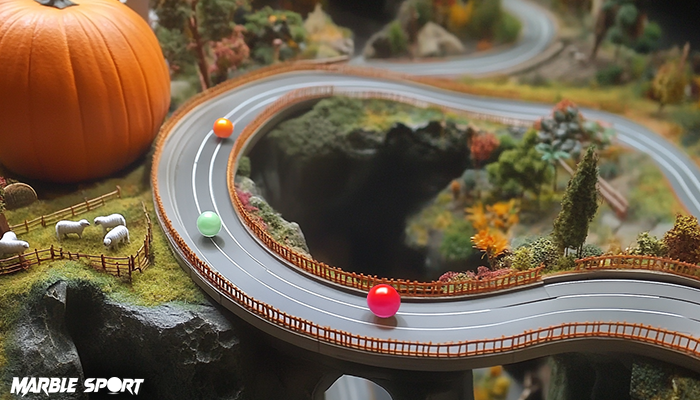
The rise of mass-produced sets
During the 1950s and 1960s, manufacturers began producing ready-to-assemble marble run kits, making them more accessible and appealing to families. These early featured pre-cut wooden pieces that could be arranged into different layouts, providing structure while still allowing for creativity.
As demand grew, marble runs shifted from handcrafted toys to commercially available kits, paving the way for larger, more complex designs. Today, experts emphasize the benefits of playing with marble runs in both learning environments and recreational settings.
The introduction of plastic and modular designs
By the 1970s and 1980s, plastic materials became widely used, making marble runs more affordable, lightweight, and durable. These sets often included interlocking pieces, allowing users to create custom layouts with ramps, loops, and spirals.
The shift to modular designs gave builders more flexibility, encouraging experimentation and personal touches. I think this innovation is what truly made marble runs so engaging, they became puzzles, race tracks, and engineering challenges all rolled into one.
STEM-focus toys and educational impact
In recent years, marble runs have been reimagined as STEM-focused toys, designed to teach science, technology, engineering, and math through hands-on play. Modern sets emphasize problem-solving, spatial reasoning, and physics, making them perfect tools for interactive learning.
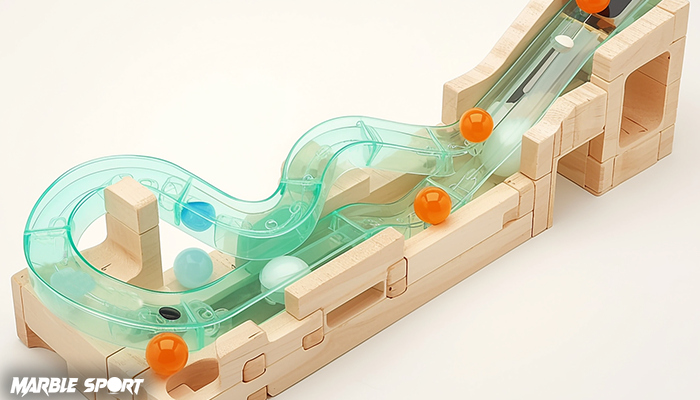
Features like magnetic pieces, motorized lifts, and programable elements have elevated marble runs into educational kits that appeal to both children and adults. Today, they’re just as likely to be found in classrooms as they are in playrooms.
The innovation behind marble runs has turned them into more than just toys. They’re now educational tools, engineering challenges, and creative outlets, proving that their appeal isn’t bound by age or time.
Marble runs in today’s culture
Marble runs have experienced a major resurgence in recent years, blending entertainment, education, and creativity into one engaging activity. They’ve gone from simple toys to global phenomena, thanks to competitive leagues, DIY projects, and the use of learning tools.
For those curious about the mechanics behind these fascinating structures, understanding how a marble run works reveals the principles of gravity, momentum, and friction that keep marbles rolling through intricate pathways.
The rise of marble racing leagues
Marble racing has taken the spotlight with events like Jelle’s Marble Runs, which introduces leagues as the Marble League and Marbula One. These competitions feature team-based marble races, complete with commentary, rankings, and fans worldwide.
The popularity has proven that these runs are not just for kids, they’re thrilling for audiences of all ages. Watching marbles compete at high speeds on intricate tracks have even turned into a form of sports entertainment, capturing millions of views online.
DIY marble runs and competitive tournaments
The rise of DIY marble runs has encouraged creativity, with hobbyists building custom tracks at home and sharing their designs online. Form simple cardboard setups to elaborate mechanical structures, these creations have become a fun challenge for builders looking to test their skills and ideas.

Competitive tournaments, both online and in-person, have also gained traction. Fans now organized their own races and obstacle courses, turning marble runs into friendly competitions that bring people together.
Educational and creative applications
Modern marble runs have also found their place in education. Teachers and parents use them to introduce STEM concepts like gravity, motion, and engineering in a hands-on, interactive way. They’re equally popular as artistic projects, allowing creators to experiment with design and visual effects.
Marble runs have come a long way, yet they remain as captivating as ever. From global tournament to DIY build and classroom tools, they’re proven the versatility and timeless appeal in today’s world.
FAQ about What is the history of marble run
What materials were used in early marble games?
Ancient marbles were crafted from stone, clay, and glass, often used for skill games.
How did marble runs change in the 20th century?
They transitioned from handmade toys to mass-produced kits with modular designs.
When did marble runs become educational tools?
In the 19th and 20th centuries, marble runs were used in schools to teach physics and problem-solving.
How old is the marble game?
Marble games date back over 4,000 years to ancient Egypt and Rome.
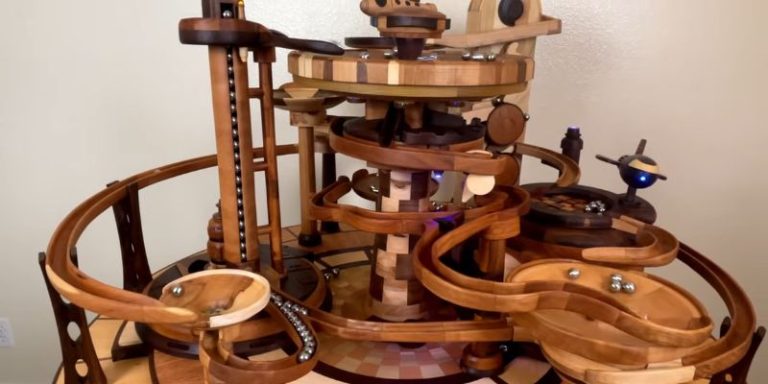

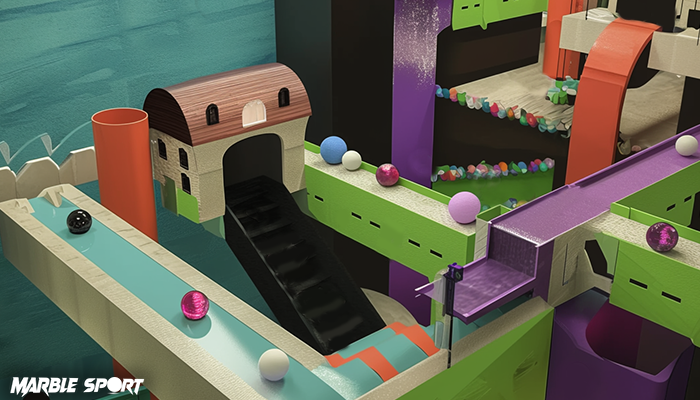
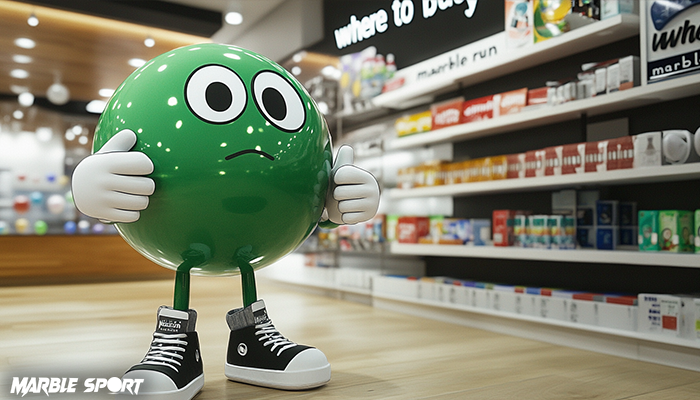
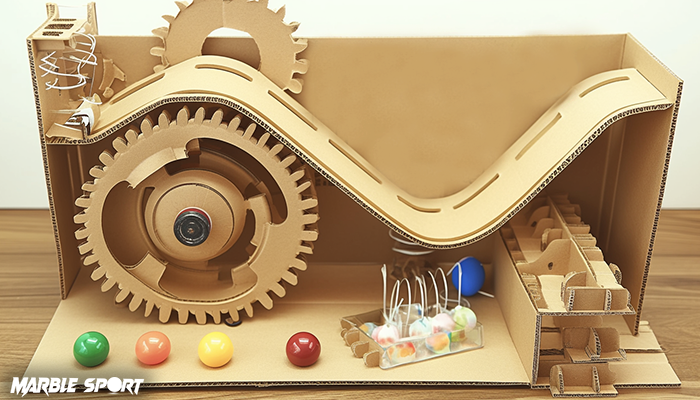
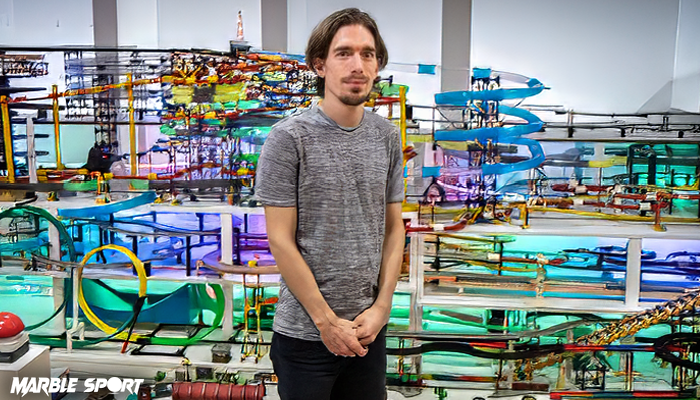
One Comment